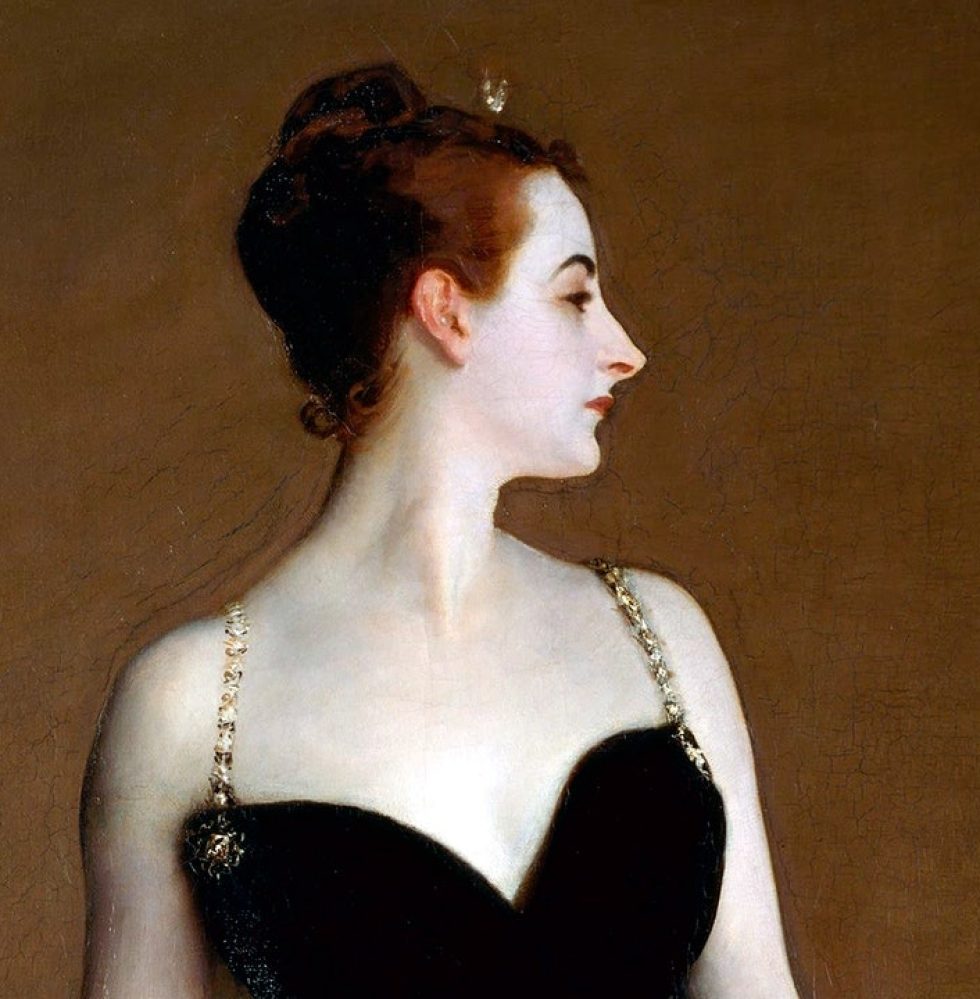
“The Madame X Files,” by Hamish Bowles, was originally published in the January 1999 issue of Vogue.
For more of the best from Vogue’s archive, sign up for our Nostalgia newsletter here.
John Singer Sargent’s 1884 portrait of Virginie Avegno Gautreau, universally acclaimed as Madame X, is a definitive study in image-making. La Gautreau flaunts her otherworldly looks and her chosen role as that exotic ornament to society, a professional beauty. She is a sphinx without a secret, “prophetic of all the sophisticated chic of Vogue,” as Philippe Jullian, historian of fin-de-siècle culture, noted in 1965. But who was this fascinator whose mystery remains compelling more than a century after Sargent captured it in sensual oil paints?
John Singer Sargent, whose career is celebrated in a retrospective at the National Gallery of Art in Washington, D.C., from February 21 to May 31 (and then traveling to Boston), with a related show of drawings at the Corcoran Gallery of Art from February 14 through May 9, was born in Florence in 1856. His American parents led peripatetic lives and raised their children gypsy fashion, traveling restlessly across Europe. By the early 1880s, after a solid schooling in the atelier of the respected academician Carolus-Duran and at the École des Beaux-Arts, Sargent was already establishing a name for himself in Paris as both a portraitist and a painter of exotic genre scenes of Italy, Spain, France, and Morocco. It seems inevitable that he should have been bewitched by the notorious Victoire Gautreau since throughout his career, Sargent was drawn to unconventionally exotic beauties. He had already delighted in the feral charms of Rosina Ferrara, a Capri girl, and mysterious Moroccan beauties like the one imbibing incense in his Fumée d’Ambre Gris, painted in 1880. Later, he produced some of his most spirited portraits when presented with sitters like the haughty Spanish dancer Carmencita; the art dealer Asher Wertheimer’s lively daughters Almina, Ena, and Betty; the madcap Gertrude Vanderbilt Whitney; and Vaslav Nijinsky. He called the fabulous and extravagant beauty Rita de Acosta Lydig “Art in its living form,” and presumably Madame Pierre Gautreau’s symbolist looks inspired similar sentiments.
Sargent found her “strange, weird, fantastic, curious.” Fascinated, he determined to capture her as a sitter, and he embarked on an elaborate courtship. He began by enlisting the help of a mutual friend, Ben del Castillo, to whom he wrote, “I have a great desire to paint her portrait and have reason to think she would allow it and is waiting for someone to propose this homage to her beauty… tell her that I am a man of prodigious talent.” Virginie Gautreau conceded. The sittings began in Paris in 1883, and that summer Sargent set off for the Gautreaus’ country estate, the Château des Chesnes at Paramé in Brittany. Here, among the immemorial oaks that gave the 1708 house its name, the Gautreaus had planted clumps of pampas grasses and tropical palms in accordance with the fashionably exotic taste of Troisième République society.



